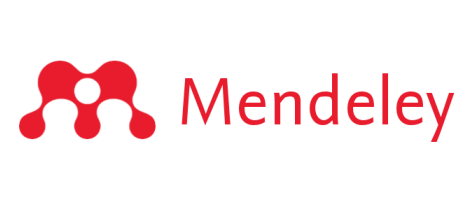Computer Mediated Communication Situs Jejaring Sosial dan Identitas Diri Remaja
DOI:
https://doi.org/10.31315/jik.v10i1.88Keywords:
identitas diri, perkembangan manusia, interaksi, Computer-Mediated CommunicationAbstract
Setiap manusia memiliki konsep diri dan identitas yang membedakan dengan manusia lainnya. Keduanya hanya dapat dikembangkan melalui interkasi; sebab melalui interaksilah semua bentuk pengalaman, rujukan, dan pengetahuan dapat diperoleh. Penelitian ini bertujuan menemukan peran kehadiran teknologi, khususnya internet, dalam membentuk konsep diri dan identitas siswa SMU di Catur Tunggal Depok Sleman. Metode penelitian berupa Focus Group Discussion (FGD). Hasil penelitian ini yaitu siswa SMU mengembangkan konsep diri dan identitas ketika mereka menggunakan internet, terutama situs-situs jejaring sosial. Komunikasi interpersonal memainkan peran penting dalam membentuk konsep diri dan identitas, khususnya pada identitas sosial, sebab setiap interaksi pasti melalui proses komunikasi. Permasalahannya menjadi lebih menarik ketika teknologi komunikasi dan informasi mempengaruhi cara berkomunikasi dan berinteraksi. Seperti telah diketahui bahwa kehadiran teknologi telah menentukan cara berkomunikasi. Teknologi dapat memperluas dan meningkatkan kapasitas dan kapabilitas kesadaran sosial yang akan mempengaruhi bentuk konsep diri dan identitas identitas sosial. Siswa-siswa SMU menggunakan CMC untuk mengekspresikan perasaan, emosi dan hiburan.References
Bagdikian, Ben.H., 2004, The New Media Monopoly, Boston: Beacon Press
Blummer, Herbert, 1969, Symbolic Interactionism Perspective and Method, Prentice Hall, NJ.
Buber, Martin, 1958, I and Thou, Charles Scribner’s Sons, New York.
Cooley, Charles Horton, “ Looking Glass Self, “ in O Brien, Jodi and Peter Kollock, 1983, The Production of Reality, Pine Forge Press, California.
Gadamer, Hans-Georg, 1975, Philosophical Hermeneutics, University of California Press, Berkeley .
Guba, Egon G and Linclon Yvonna S, “ Competing Paradigm in Qualitative Research, In Norman K Denzin and Yvonna S Lincoln, 1994, Handbook of Qualitative Research, Sage Publication, Thousand Oak
Littlejohn, Stephen W and Kathy Domecini, 2007, Communication Conflict and Management of Difference, Waveland Press, Illinois.
Mead, Geroge H, 1962, Mind, Self and Society, The University of Chicago Press, Chicago
McQuail, Denis, 2000, McQuail’s Mass Communication Theory, Sage Publication, London
Miller, Katherine, 2002, Communication Theories Perspectives Processes and Contexts, McGraw Hill, Boston.
McLuhan, 1964, Understanding Media: The Extensions of Man, McGraw Hill, New York
Rheingold, H, “ A Slice of Life in My Virtual Community” in P. Ludlow (ed), 1999, High Noon on the Electronic Frontier: Conceptual Issues in Cyberspace, MIT Press, Cambridge MA.
Sussman, Gerald, 1997, Communication Technology and Politic in The Information Age, Sage Publication, California.
Wood, Andrew F and Smith, Matthew J, 2005, Online Communication, Lawrence Erlbaum Associates Publishers, New Jersey.
Downloads
Published
Issue
Section
License
Authors who publish articles in this journal agree to the following terms:
- Copyright remains with the author and gives rights to the Jurnal Ilmu Komunikasi as the priority to publish the article with an Creative Commons Atribusi 4.0 Internasional License, which allows the article to be shared with acknowledgment of the author of the article and this journal as the place of publication.
- Authors can distribute the publication of their articles on a non-exclusive basis (for example: on university repositories or books) with notification or acknowledgment of publication in the journal Option
- Authors are allowed to post their work online (for example: on personal websites or in university repositories) before and after the submission process (see The Effect of Open Access)
Jurnal Ilmu Komunikasi is licensed under a Creative Commons Atribusi 4.0 Internasional License.









